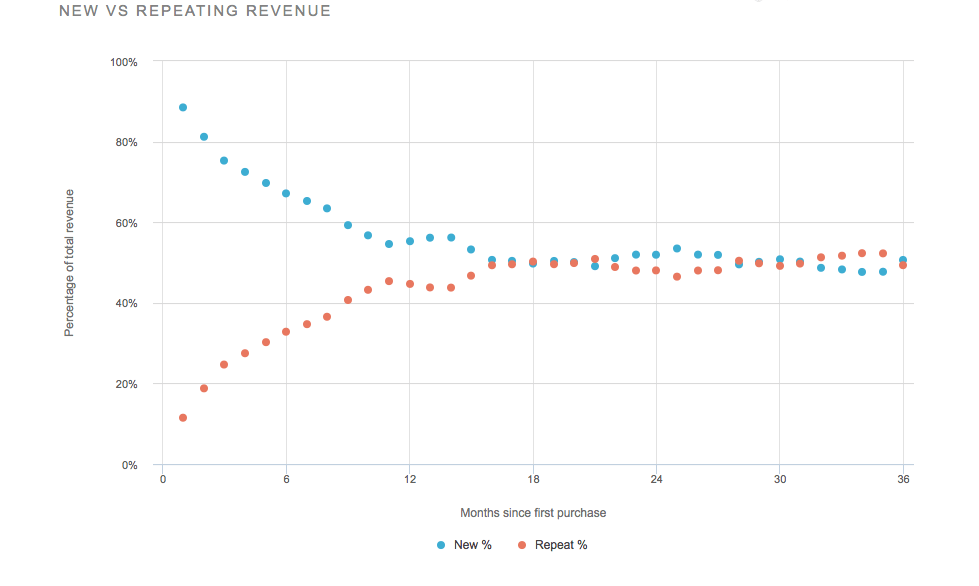Customer Development: 4 Steps for Decreasing Churn
If you had to sum up conversion, customer success and retention into one phrase, that phrase might be “customer development.” Customer development doesn’t have a succinct and pithy definition – it’s just too complex of a concept to smush into a neat sentence. The best definition I’ve come across is from Patrick Vlaskovitz in The Entrepreneur’s Guide to Customer Development:
“Customer Development is a four-step framework to discover and validate that you have identified the market for your product, built the right product features that solve customers’ needs, tested the correct methods for acquiring and converting customers, and deployed the right resources to scale the business.”
Clear as mud, easy as an appendectomy.
Which is to say, it’s not easy at all. So let’s break it down in terms that lend themselves more to concision: Conversion, customer success and retention.
It’s like the circle of life. They’re all connected and flow into each other. To eliminate churn and increase customer success, you should constantly optimize your conversion process (hello retention!).
How the conversion-success-retention feedback loop works
For example, in 7 Reasons to Optimize your SaaS Free Trial, Lincoln Murphy says “When your prospect can see for themselves that your product will help them achieve their Desired Outcome, that’s better than any convincing you could do.”
Using a free trial (note: Not a “freemium” model), you can convert customers faster if you incorporate customer success practices like surveying customers to find out what their desired outcomes are, and following up to ensure they’re achieving them (and if not, could they with an up-sell?). And, the faster you can convert, the sooner your customer will see value, and the sooner you can upsell, cross-sell, add-on, etc.
75% of all cross-sell opportunities occur within the first 90 days. – Pitney Bowes
Time is critical in the onboarding process because it’s within the first three months that most users are the most active and engaged. If you’re not already, you should treat your free trials just like the onboarding process for a new customer, complete with customer success activities that help you help them.
Customer Success is, essentially, finding out what your customer thinks constitutes a successful outcome, and helping them achieve it. This does not mean successfully using your product, service or tool, but rather using your product/service/tool to actually achieve the customer’s desired goal. Now, that might be well out of your hands. If you provide an email service like MailChimp, it’s not your job to make sure each customer’s newsletter contains compelling, interesting copy that makes open rates soar.
Or is it?
When I was explaining features vs. benefits to a client a while back, I told them: When you buy a hammer, you don’t want the hammer. You want a nail in your wall.
Your product is like that hammer. The hole in the wall is your client’s desired outcome. Even if your hammer is pink and sparkly (I would totally buy that hammer btw), that’s not what will keep clients coming back. The results they can achieve with your product will.
Which means that in those first few days of a free trial, or onboarding experience, they’d better end up with a proverbial hole in their proverbial wall – or you’ve lost them.
On the other hand, if you provide your customer not only with the tool, but also with the knowledge and support they need to achieve their desired outcome, you will achieve conversion, retention, customer success, and the kind of crazy-growth that can only happen when customers become enthusiastic brand advocates.
For example, if you sell ad space on Social Media, the desired outcome your clients probably have isn’t to see their ad, but to have prospects see their ad, click on it, and convert into customers. That can only happen when ads are well-targeted, deliver what they promise, and are consistently branded. As part of your customer success efforts, you shouldn’t stop at selling ad space, but actually help your clients to create better ads by:
-
Publishing tutorials
-
Emailing tips on wording, design and conversion tactics
-
Hosting webinars with conversion experts
-
Creating ad templates designed by experts
-
Offering ad design as an additional service
Or any other idea your creative team can think of to ensure client success. All of these ideas come with the added benefit of being highly shareable, giving you an SEO boost as well.
Some companies are doing this really well Using research from Shopify’s Ecommerce Growth Benchmark, RJ Metrics found that a top quartile of new companies were growing far faster than their competition. Not only were these new companies acquiring 3.5 times more new customers than their competitors, they excelled in retaining them early on. In fact, 20 percent of their revenue came from repeat purchases in just their first few months of business. By the end of their first three years, the majority of their revenue was coming from repeat buyers.

How can you achieve higher acquisition and retention? Try these ideas.
-
Surveys – Ask new clients, old clients and your best clients how they found your product/service, what made them decide your solution was the best, and what (if anything) might have held them back from choosing you. Also, use exit surveys on CTA pages to ask people why they’re leaving. Then, use this information to optimize your acquisition strategies.
-
Email marketing – Acquisition and retention both require staying on top-of-mind, which makes email campaigns highly effective, if done right. Train your prospects and customers to expect real value from each email (great content and tips, occasional exclusive deals) to see your open rates rise.
-
Strong customer success team – This team should know, for each client, what their desired outcomes are and then create measurable benchmarks so the customer knows they’re making progress. Informing customers of their own progress shows A) you care, and B) reminds them why they chose you in the first place.
-
Live chat – Use your Live Chat to alert you to parts of your website that are generating questions (by being confusing, too vague, or missing something prospects would like to see).
Their isn’t an alchemical secret to their success – it’s a combination of having a good product, great product-market fit, positive customer experiences, and a keen focus on KPI’s around customer acquisition. But, these companies also have this in common:
They lead their new customers to make second purchases within the first 30 days.
RJ Metrics found that the likelihood of a customer of one of these top quartile companies to make a second purchase was nearly 30 percent. Once that second purchase was made, the likelihood of a third purchase rose to more than 50 percent. From there, the odds of additional purchases continued to rise.
Examples like this make it as clear as day that acquisition isn’t where the big money is. Your success, your potential for sustainable growth and scalability, depends on a strong relationship between acquisition and retention, which can only happen when your customers achieve the successes they hope for.
—
 Nichole Elizabeth Demeré is a SaaS Consultant & Customer Success Evangelist. Chief Strategy Officer at @Inturact. Moderator at @ProductHunt & @GrowthHackers. Co-Founder at @GetTheCraft & @SaaSCommunity. Previously: Growth at @Inboundorg. INFJ.
Nichole Elizabeth Demeré is a SaaS Consultant & Customer Success Evangelist. Chief Strategy Officer at @Inturact. Moderator at @ProductHunt & @GrowthHackers. Co-Founder at @GetTheCraft & @SaaSCommunity. Previously: Growth at @Inboundorg. INFJ.


Pingback: Customer Development: 4 Steps for Decreasing Churn()
Pingback: 2015 in Articles()